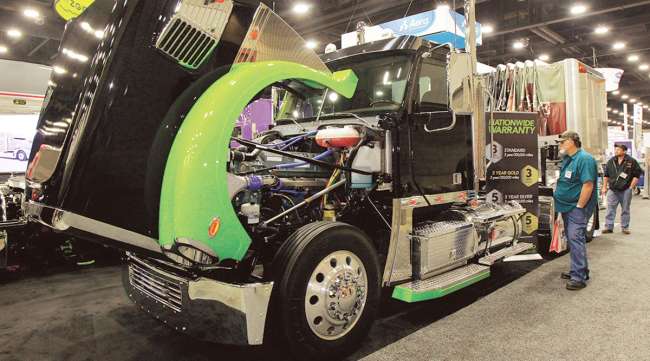Senior Reporter
EPA Issues Proposed Rule to Repeal Regulation of Glider Kits

The U.S. Environmental Protection Agency on Nov. 9 issued a proposed rule to repeal the Obama administration’s Medium- and Heavy-Duty Truck Phase 2 Greenhouse Gas Emission and Fuel Efficiency Standards for the glider industry.
The agency has requested comment on the notice of proposed rulemaking through Jan. 5.
EPA said that under its proposed interpretation of the Clean Air Act, it lacks the authority to regulate glider vehicles, glider engines and glider kits.
“The previous administration attempted to bend the rule of law and expand the reach of the federal government in a way that threatened to put an entire industry of specialized truck manufacturers out of business,” EPA Administrator Scott Pruitt said in a statement.
“Accordingly, the agency is taking comment on an interpretation of the Clean Air Act that recognizes the unique nature of a vehicle made up of both new and used component parts. Gliders not only provide a more affordable option for smaller owners and operators, but also serve as a key economic driver to numerous rural communities.”
The Obama administration maintained that even though gliders are not complete vehicles by themselves, they are highly significant components of tractor-trailer combinations and therefore they can be regulated under the terms of the Clean Air Act.
Gliders not only provide a more affordable option for smaller owners and operators, but also serve as a key economic driver to numerous rural communities.
EPA Administrator Scott Pruitt
American Trucking Associations believes the proposed repeal would be a mistake from an environmental perspective, and cited the success of its members in adopting the latest emissions-reduction technology.
“ATA is disappointed in EPA’s decision to modify the glider kit provisions under the Phase 2 Rule. ATA members have a long-storied record of supporting clean engine technologies, improving efficiencies and becoming more sustainable,” said Glen Kedzie, ATA’s energy and environmental affairs counsel, in a statement. “Our close work with EPA on the Phase 2 Rule demonstrated that regulations based on sound data, science and compromise are superior to those developed in a vacuum. The agency’s position supporting the continued growth of the glider kit industry that produces the highest emitting equipment on our nation’s highways is perplexing.”
The EPA under President Donald Trump has said gliders are a specially manufactured type of heavy-duty highway vehicle assembled from newly manufactured kits that include the vehicle’s frame and cab, to which a used engine, transmission and axles are added. EPA estimates that about 10,000 gliders are manufactured annually, but comprise less than 5% of the Class 8 heavy-duty highway truck market.
Due to the unique way that gliders are manufactured, the agency said it is proposing that gliders should not be regulated as “new motor vehicles” or “new motor vehicle engines.”
“This action does not affect nor propose to affect EPA’s authority to address heavy-duty engine rebuilding practices under the Clean Air Act,” EPA said.
The new NPRM says that according to comments submitted to EPA during the Phase 2 rulemaking, gliders are approximately 25% less expensive than new trucks, which makes them popular with small businesses and owner-operators.
“In contrast to an older vehicle, a glider requires less maintenance and yields less downtime,” the proposed rule said. “A glider has the same braking, lane drift devices, dynamic cruise control and blind spot detection devices that are found on current model year heavy-duty trucks, making it a safer vehicle to operate, compared to the older truck that it is replacing.”
The Natural Resources Defense Council, an international nonprofit environmental organization, takes issue with the new proposal.
“Reopening this loophole is an unconscionable move that could cause the premature deaths of 1,600 Americans from just one year of dirty truck sales,” said Luke Tonachel, director of NRDC’s Clean Vehicles and Fuels Project. “Instead of letting these dirty trucks keep spewing up to 40 times more pollution than modern big rigs, the EPA should protect the air we all breathe from this dangerous threat.”
Kedzie noted EPA has begun testing glider engines to determine their emissions levels. Tonachel is skeptical of this effort.
“Additional tests of the older engines are not going to resolve this severe threat to health. EPA is opening a dangerous loophole with this repeal, which could encourage even greater sales of these highly-polluting trucks,” Tonachel told Transport Topics.
The Senate recently approved Bill Wehrum to serve as EPA Assistant Administrator for the Office of Air and Radiation, where he will be in change of the air office.
Staff Reporter Roger Gilroy contributed to this article.




